|
Plants for your home
(By Mary Efanti)
Dracaena
|
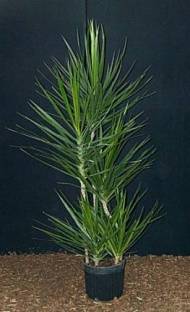
|
|
Dracaena
marginata
|
Origin - Description
Although it looks purely exotic, its name is purely Greek and describes it
precisely. A sturdy grayish trunk with long spear-like leaves that point
downwards, usually dark green while in some varieties the colour is lighter green or has red
"stripes" at the edge of the leaves.
Dracaena originated in Magadascar while some of its many varieties come from tropical Africa or
Guinea. It is one of the plants used most often in the florists baskets that we have been offered or have given as a
gift.
Care
Most of us have at least one dracaena in our home or office as it is one of the plant that easily survive indoors even when the conditions are far from
ideal. The common dracaena (marginata variety) can be easily used to the conditions on our verandas but it will not stand freezing
temperatures.
|
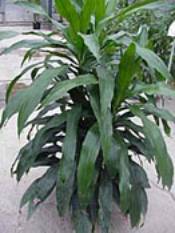
|
|
Dracaena
Janet Craig
|
|
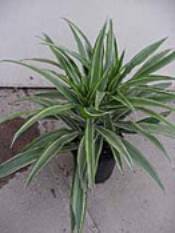
|
|
Dracaena
Deremensis
|
Dracaenas need plenty of
light, filtered through a curtain if indoors, or in a semi-shaded spot on our balconies because direct sunlight can damage their
leaves, especially during the warm months of summer. They require little water but water
regularly. Their soil should be light, consisting of
peat mainly and it should drain well.
They also require plenty of humidity in their environment. It would be a nice gift to your
plant, if you could give them a lukewarm shower in your bathtub and leave them there until they dry so that they can absorb the humidity of the
room. Especially during the winter, when the indoor atmosphere is very
dry, make sure that you give your dracaenas and the rest of your plants enough
humidity.
Good solutions that provide humidity to plants are the use of a
humidifier, or grouping of the plants on the tray with pebbles that you always keep moist so that the plants will absorb the humidity of the water as it dries
out. A practical though not long lasting trick is to put a couple of icecubes on top of the
soil, away from the trunk of the plant, and let them thaw so that the plant will absorb the moisture as they
melt.
Your dracaena will tell you when something is wrong. The most usual symptom is that the tips of the leaves turn
brown, this might be due to little water or highly alkalic soil.
|
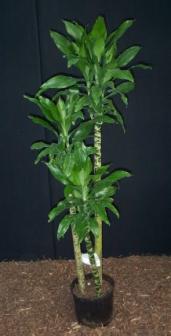
|
|
Dracaena
fragrnas
|
Generally
speaking, dracaenas are easy care plants as they need no special treatment and are resistant to most
diseases. What you need to do is to cut off the lower leaves that turn yellow and only
these. Fertilizing with a liquid fertilizer and adding some liquid iron is useful in spring but not
necessary.
If your dracaena is an outdoor
plant, bring her inside the home on those freezing days because freezing temperatures will burn it to the
ground. Your plant will not die because usually only the trunk and the leaves are damaged and not the root
system.
If this happens cut off the damaged leaves and the trunk down to the point where is still feels strong to the touch and wait until you see new growth at the
sides, exactly below the point where you cut it off.
Keep in mind that dracaenas are not
fast-growers so be very patient and do not discard of the plant because the odds are that it will reward you after
all.
|
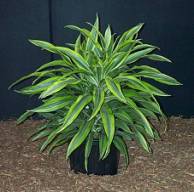
|
|
Dracaena
lemon stripe
|
Dracaenas can be easily combined with other plants in the same pot, either green plants or flowers that should however be of less height than the dracaena since it needs lot of space to stretch out the
"umbrella" of its leaves.
Try combining it with pothos
(devil's ivy), kalanchoe, African violets, fittonias, or if it's an outdoor plant you could even use bulbs such as
crocus, anemones, dwarf irises, there are so many combinations. Go ahead and
experiment.
Mary Efanti
[email protected]
|
